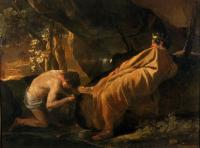Saturday, April 06, 2013 -  Jewelry,museum theft,Villa Giulia
Jewelry,museum theft,Villa Giulia
 No comments
No comments
 Jewelry,museum theft,Villa Giulia
Jewelry,museum theft,Villa Giulia
 No comments
No comments
Easter Theft at the Villa Giulia: Reports from online publications in Italian
Almost one week after thieves robbed the Villa Giulia in Rome and stolen jewelry, this is what information has been published online in Italian (indirectly quoted from translated material):
Il Giornale dell'Arte.com reported that at least ten gold necklaces with emeralds, pearls, and rubies from the 19th century Castellani Collection were stolen on Easter weekend when thieves smashed the display cases on the floor above the entrance to the museum. Police are investigating if there could have been inside help as the 112 alarm (Italy's version of 911) didn't go off immediately.
The pieces may have been selected as a "theft by commission" or because it might be easier to remove the precious stones and resell these piece on the market as the Etruscan one's are well documented and these less so.
For now investigators are focusing on the the entry point downstairs, an assessment of the 50 or so staff associated with the museum's surveillance, and with reviewing tapes CCTV tapes both during the theft and in the days preceding the assault in the hopes that perhaps the assailants cased the museum in the days preceding the event passing themselves off as visitors.
Corriere della Sera reported that the Carabinieri are still waiting for a formal inventory of the stolen pieces and that other objects were damaged when the casing was smashed.
Given the execution of the event, law enforcement is placing a higher focus on the statements of the various staff responsible for the museums security watch to look for irregularities or contradictions of their recollection of the events as they occurred during the theft.
There is also speculation as to if the smoke was used to possible create a diversionary fire, create a smokescreen to hide the thieves movements or to perhaps signal their pick-up at the completion of the theft.
Law enforcement are also investigating other thefts of local residences in the area to look for similarities.
Libero Quotidiano reported that the Regional Association of Roman Goldsmiths, in cooperation with the National Etruscan Museum of Villa Giulia, has been working on a project that to document the complexity of the Castellani Collection in relation to historic archaeological finds in jewelry making and 19th century recreations and creativity. Part of the project involved preparations for a traveling exhibition that highlighted the School Castellani Goldsmiths in relation to previous Roman and Etruscan jewelry, with an emphasis on how these original styles were/are being utilized in contemporary jewelry.
As first reported in La Repubblica on March 31, Easter Sunday:
The thieves arrived from the back of the museum. At 11.30 p.m. Saturday, March 30, thieves locked the guards in the gatehouse, went upstairs to the Hall of Gold, smashed three display cases, and stole jewelry collected by the Castellani family in the 19th century. The thieves used a smoke bomb to obscure images on the surveillance camera.
Neither the police nor the museum have identified which items were taken although one government official says that the items were not from the valuable archaeological collection of the National Etruscan Museum. The extent of the theft was limited by the appearance of the police who were alerted by the guards. Officials are reviewing footage from the CCTV cameras.
Daniele Particelli writing for Crimeblog.it on March 31:
Thieves launched tear gas to obscure the surveillance cameras as they entered the museum.An alarm system was triggered when the first display case was smashed in the Hall of Gold; two guards had alerted the police whose arrival reduced the thieves time to grab objects.
Roma Daily News published on April 2:
Police investigators are reviewing hours of surveillance tape, looking for suspects who may have visited the Etruscan museum in the days leading up to the theft. The number of thieves is identified as three. The thieves used plastic ties to obstruct access to the gates surrounding the museum grounds.






















